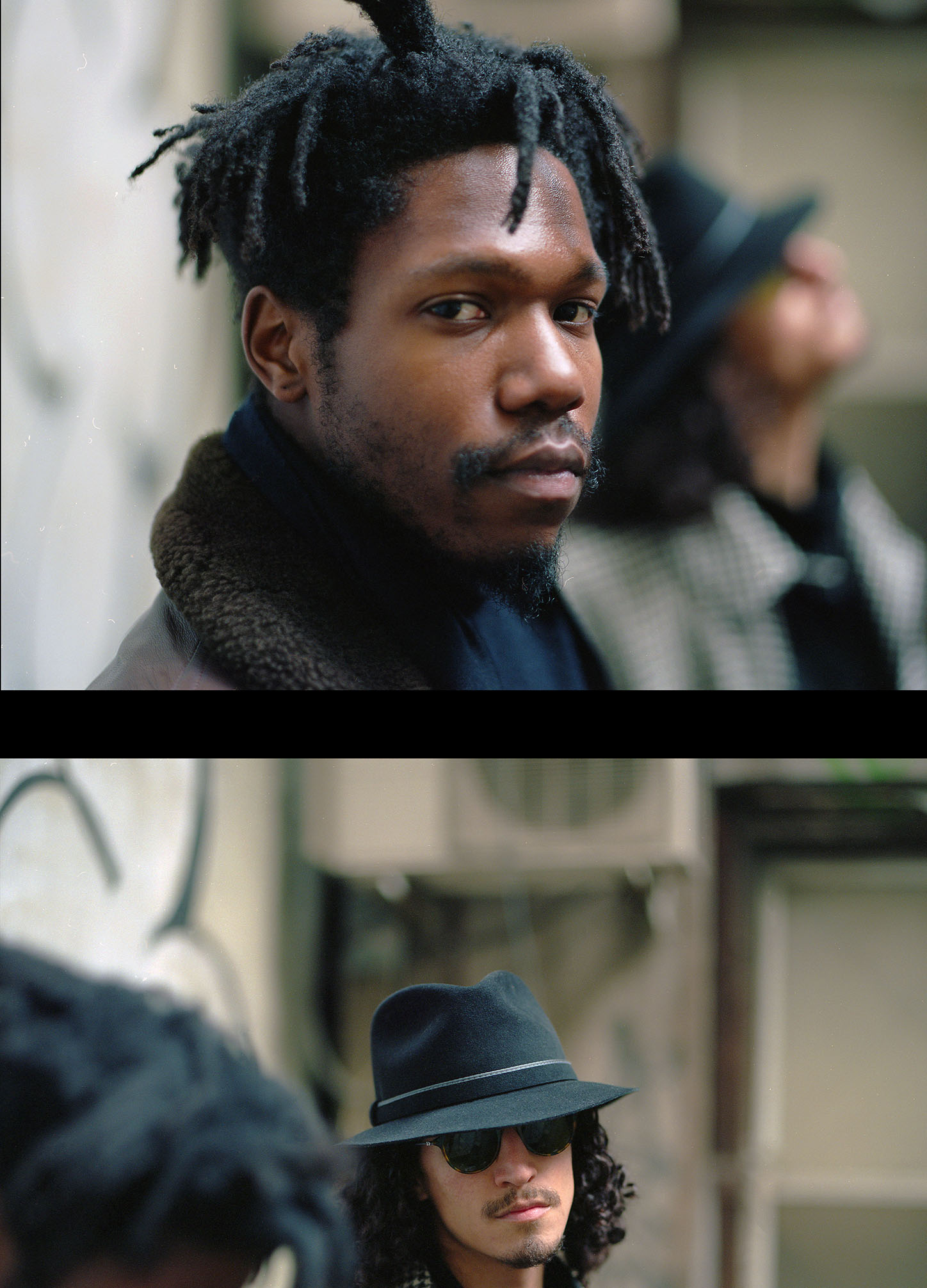Every few minutes, the train would shriek and bustle over us, forcing whoever was talking to raise their voice—an easy adaptation to the sort of sonic inundation that these musicians thrive off of, because for Isaiah and Austin, sound is an amorphous, elastic thing. Even the ugliest bits of noise can be shaped to their liking.
Having found their footing within DIY art spaces and the Lower East Side skater community, the Collective itself is in a constant state of adaptation, a rotating group of musicians who play often-improvisational, experimental jazz and funk. “People are very free when they’re making music with us,” Isaiah tells me, laying on a bench with eyes fixated on the ceiling. “There’s a lot of sharing and communication going on, and in a pretty telepathic way.” Black-and-white portraits of Duke Ellington and Cannonball Adderley are watching over us from the wall, and I can’t help but think that Onyx Collective, with their relentless rule-breaking and improvisation, are making these legends proud by carrying an authentic jazz ethos into the digital age.
“We have a bunch of friends who we don’t even have to invite to our shows in the Lower East Side,” Isaiah tells me. “They’ll just roll by coincidentally.” Onyx came up with a strong focus on live performance—until late last year, they hadn’t even made any real songs of theirs available online. When Isaiah got offered a time slot at innovative art and music radio station KNOW-WAVE in 2014, he took it as an opportunity to build on his vision for Onyx, bringing in guests to jam with on air, many of whom would eventually perform with the collective on their live gig circuit.
